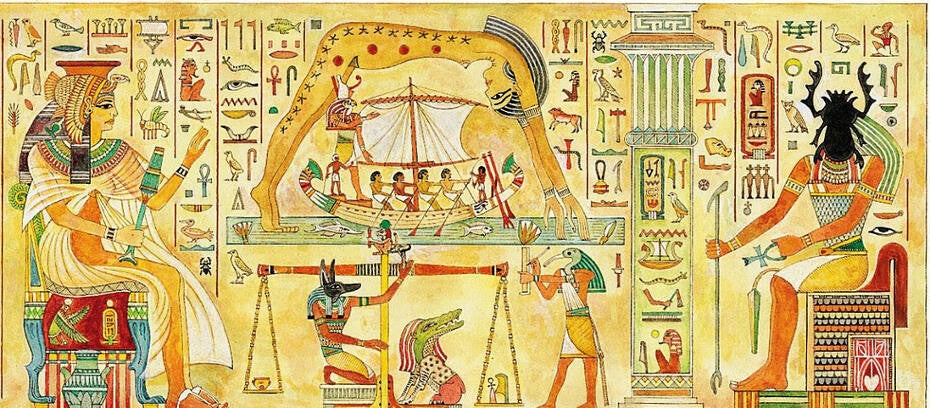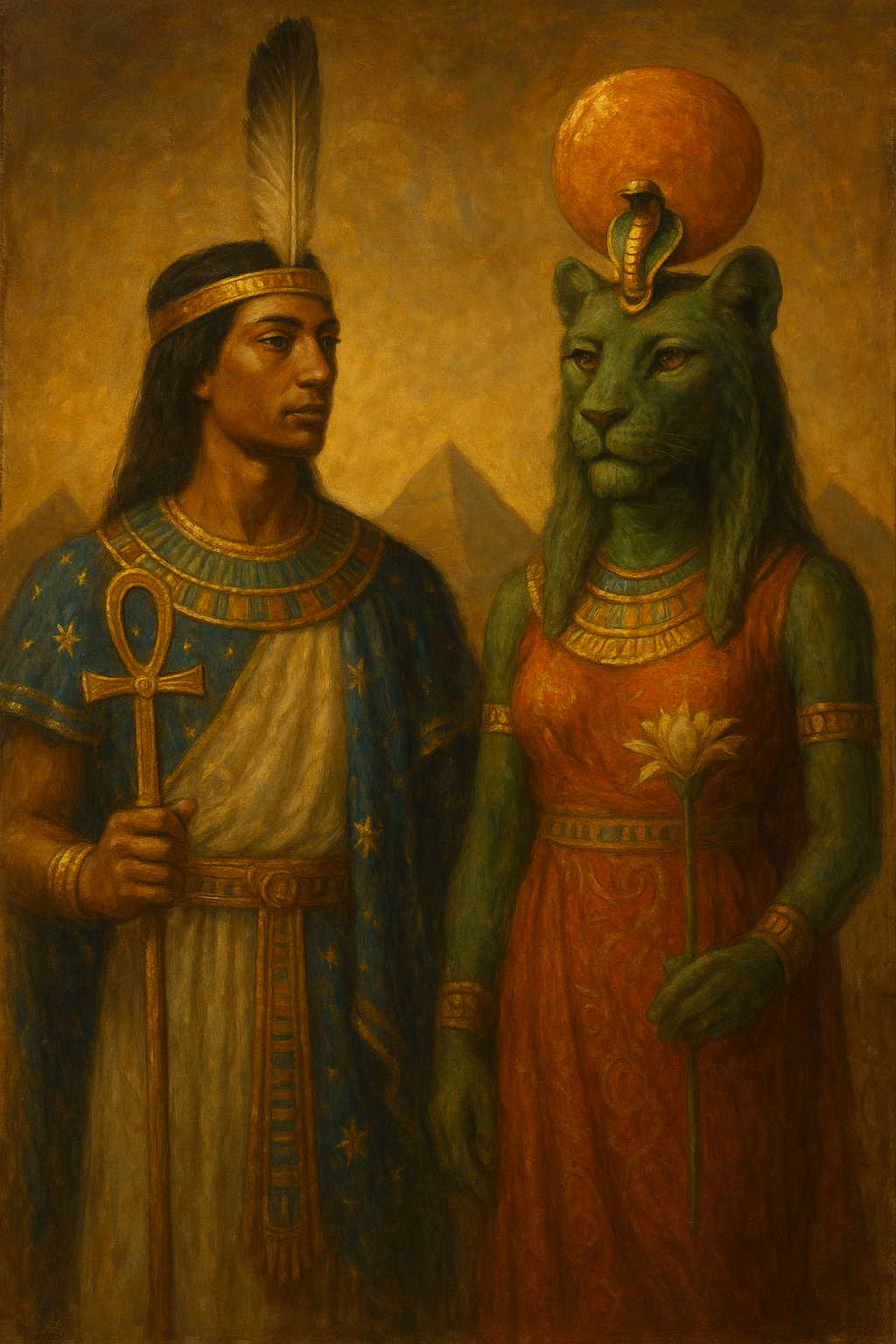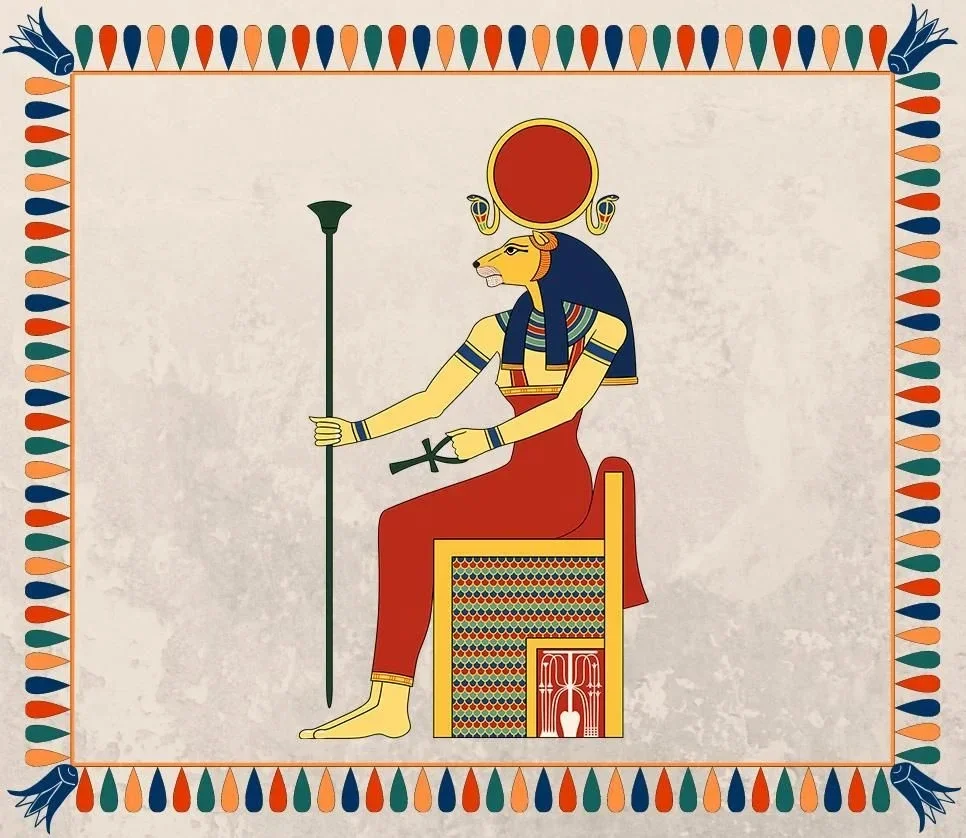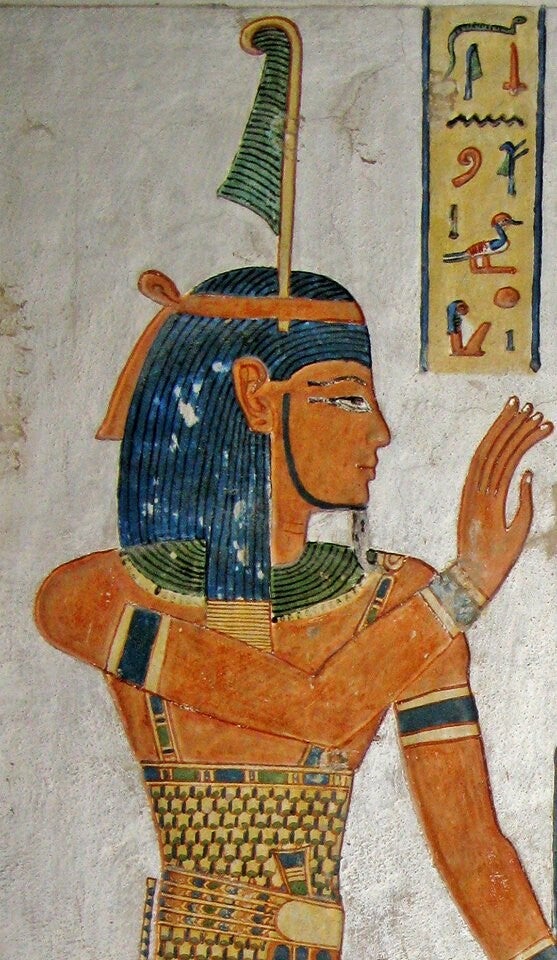
Shu and Tefnut: Breath and Flame Beyond the Circle
When Creation Erupted, the Spiral Unfolded
“In the beginning, there was the deep. And from the deep rose the light.”
Shu and Tefnut are the first-born of Ra—twins of sky and flame, air and moisture, form and vitality.
They emerge not from dust or breath alone, but from desire.
From the most primal act of creation: divine ejaculation, guided by Hathor; the hand of the goddess.
In ancient myth, Ra brings forth these deities by masturbating into the waters of Nun, his seed the spark of duality, the first act of cosmic becoming.
This is the Kemetic Big Bang.
A singularity - the complete, unbroken source - erupts, and from it pours all that ever was and will be.

Ejaculation of Light: The Birth of Shu and Tefnut
In the Pyramid Texts, Ra (or Atum-Ra) brings forth his children by masturbating, with Hathor (or the Eye) as his own hand - his female principle guiding the emergence of polarity.
- Shu is born of his breath - air, sky, emptiness.
- Tefnut is born of his fluid - moisture, flame, life force.
This is not shameful. This is sacred.
The act of creation begins with pleasure, embodiment, and divine intention.
Shu and Tefnut are not accidents or subordinates.
They are emanations; extensions of the spiral. The first echo of the One becoming Two.

Tefnut: The Wandering Eye and the Lioness Before Sekhmet
Tefnut, often overlooked, holds the primordial flame.
She is a lioness, fierce and radiant, and in many artworks, indistinguishable from Sekhmet.
They share the solar disk, feline form, and divine rage.
The Wandering Eye myth speaks of her leaving Ra in fury, needing to be coaxed back with music, intoxication, and ritual - just like Sekhmet.
This is not coincidence. It is repetition with variation; the spiral spiraling again.
- Sekhmet is Tefnut reborn in a later age.
- Tefnut is Hathor’s echo, lion-shaped, flame-born.

Shu: Breath of the Divine and Separator of Worlds
Shu is not just air. He is the structure air creates.
He holds Nut (sky) above Geb (earth), allowing life to take form in the space between.
He is the sacred masculine as spaciousness; not force, but form-giver.
He is Ra’s breath made body.
In some texts, Shu is called the son and double of Ra. Like Ra, but shifted. Not the source, but the expanse.
Without Shu, creation would collapse in on itself.
He is the pause between pulses. The silence that holds the song.
From Spiral to Expansion: The Moment of Deviation
Before Shu and Tefnut, there was only Ra and Hathor - giving and receiving, birthing and embracing, endlessly.
They drew a perfect ouroboric circle; a closed loop of divine wholeness.
But with this act, with the expulsion, the desire, the pleasure, the spiral widened.
The circle deviated. Not broken, but expanded.
This was the moment of form.
The moment when the infinite became dual.
Not a fall.
A cosmic inhale.
🜂🜁 Elemental Energies and Symbolism
- Tefnut: Flame and dew, chaos and balance, lioness, fertility, protector
- Shu: Breath, sky, order, expansion, upliftment, stillness
Symbols often include:
- Feathers, ankhs, lotuses, solar disks, and lions
- Appear as twin deities standing between Nut and Geb, or alongside the rest of the Ennead

Cosmic Twins of Transformation
Shu and Tefnut are the cosmic twins of transformation.
They are what happens when the One dares to expand.
When desire becomes form.
When breath meets flame.
Their story teaches us that:
- Desire is divine
- Creation is ecstatic
- The feminine and masculine energies are not opposites; but reflections, refracted through time
- Everything that is now was born in that first eruption of divine will
The first pulse was not a whisper.
It was a cry. A moan. A roaring breath.
And from it came everything.

